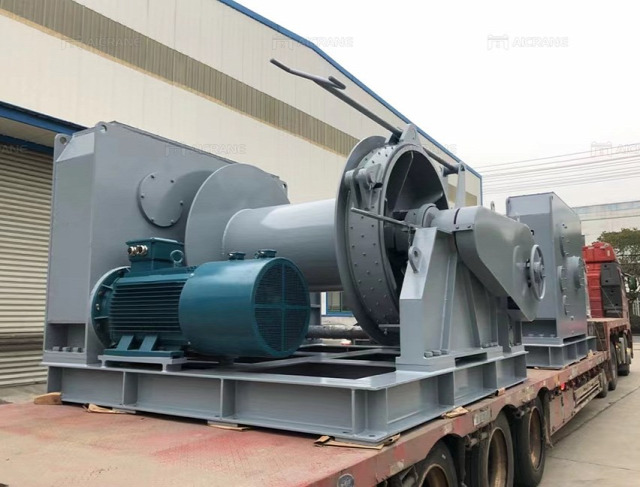Electric mooring winches are vital devices used on ships, boats, and offshore platforms to secure vessels during docking, berthing, and mooring operations. These winches are powered by electricity, providing reliable and efficient performance. Understanding the structure and components of an electric mooring winch is essential for ship operators and crew members to ensure proper operation, maintenance, and safety during maritime activities. In this article, we will explore the anatomy of an electric mooring winch and delve into the key components that make it function.

1. Electric Motor
The heart of an electric mooring winch is its electric motor. The motor is responsible for converting electrical energy into mechanical energy to drive the winch's drum or drum(s) for line handling. Electric mooring winches are commonly powered by AC (alternating current) or DC (direct current) motors, depending on the specific application and power requirements of the vessel.
2. Gearbox
The electric motor is typically connected to a gearbox, which is responsible for reducing the motor's speed and increasing the torque output. The gearbox provides the necessary mechanical advantage to handle heavy loads during mooring operations. It also ensures that the winch drum rotates at the desired speed, allowing for precise control during line handling.
3. Drum(s)
The drum is a cylindrical component that is mounted on the winch shaft and connected to the gearbox. It is the primary element responsible for winding and unwinding the mooring line. Electric mooring winches for sale can have one or multiple drums, depending on the vessel's mooring requirements. Each drum can be independently controlled, allowing for flexible and simultaneous line handling.
4. Clutch and Brake System
The clutch and brake system is essential for controlling the drum's rotation and locking it in place when necessary. The clutch engages or disengages the drum from the gearbox, allowing it to rotate freely or remain stationary. The brake system provides controlled stopping power, preventing the drum from unwinding under load during mooring.
5. Control Panel
The control panel is the interface through which the winch operator controls the electric mooring winch. It contains various switches, buttons, and levers that enable the operator to start and stop the winch, control the direction and speed of the drum rotation, and engage or disengage the clutch and brake system. Some modern electric mooring winches may feature electronic control systems for enhanced precision and automation.
6. Drum Leveling and Spooling Device
To ensure the even and tidy winding of the mooring line on the drum, electric mooring winches often incorporate drum leveling and spooling devices. These components maintain proper tension on the line as it is wound onto the drum, preventing entanglements and ensuring efficient use of available space on the drum.
7. Load Sensing and Monitoring Systems
Advanced electric mooring winches may feature load sensing and monitoring systems. These systems provide real-time feedback on the tension and load experienced by the mooring line, allowing the operator to make informed decisions and adjust winch operation accordingly. Load sensing and monitoring systems contribute to the safe handling of heavy loads during mooring operations.
8. Emergency Stop and Safety Features
Safety is of paramount importance in maritime operations. Electric mooring winches are equipped with emergency stop buttons and other safety features to immediately halt winch operation in case of emergencies or unexpected situations. These features protect both the crew and the winch itself from potential accidents or damage.
9. Mounting and Housing
Electric mooring winches are typically mounted on the deck or other suitable structures of the vessel or offshore platform. The winch is housed in a sturdy and protective casing to shield it from harsh marine conditions, such as saltwater, moisture, and corrosion.
Conclusion
Electric mooring winches are essential tools in the maritime industry, offering efficient and reliable handling of mooring lines during docking, berthing, and mooring operations. Understanding the structure and components of an electric mooring winch is crucial for ship operators and crew members to operate the winch safely and effectively. From the electric motor and gearbox to the drum(s), clutch and brake system, control panel, and safety features, each component plays a vital role in ensuring the winch's seamless performance. Regular maintenance and proper operation of the electric mooring winch are key to extending its service life and contributing to the overall safety and success of marine activities at sea.

